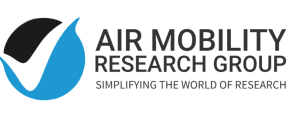
Commentary by David Ison PhD of the Advanced Air Mobility Group – reproduced with kind permission of the author. The original document can be found here
The Act transfers Advanced Air Mobility (AAM) functions from the NAS Systems Engineering and Integration Office to the Office of Aviation Safety.
The Administrator establishes an Aircraft Noise Advisory Committee to advise on aviation noise exposure issues and FAA noise policies. The committee comprises representatives from engine manufacturers, air carriers, airport owners, aircraft manufacturers, AAM manufacturers, institutions of higher education, and airport-adjacent communities from geographically diverse regions.
The Act defines AAM as a transportation system involving urban and regional air mobility using manned or unmanned aircraft. It also discusses powered-lift aircraft, regional air mobility, and vertiports. Congress believes the US should become a global leader in AAM, prioritize type certification, publish regulations, work with international partners, leverage the existing aviation system, and work with manufacturers and stakeholders to ensure safe entry of powered-lift aircraft into the National Airspace System.
The Administrator must apply categorical exclusions in compliance with the National Environmental Policy Act of 1969 and establish additional exclusions after consultation with the Council on Environmental Quality. Section 2 of the Advanced Air Mobility Coordination and Leadership Act is amended to include passenger-carrying aircraft, airport operators, fixed-base operators, and processes and programs for improving Federal reviews for infrastructure development. The working group includes the Secretary of Transportation and a working group on dissenting views.
The Secretary of the Air Force, in consultation with the Administrator of the FAA, will consider other interagency coordination activities related to AAM and other new or novel users of the national airspace system. The working group will consider the use of advanced technologies, including electric aircraft, in transporting people and property by air between two points in the United States.
The rules for operating powered-lift aircraft include SFAR regulations. The rule establishes procedures for certifying pilots of powered-lift aircraft and provides operational rules for aircraft capable of transporting passengers and cargo. The regulations provide a practical pathway for pilot qualification and operations, performance-based requirements for energy reserves, pilot training requirements, and alignment with International Civil Aviation Organization standards.
The rules will apply to the operation and operator of rotorcraft or fixed-wing aircraft. The Administrator must establish an aviation rulemaking committee within three years of issuing the first certificate to commercially operate a powered-lift aircraft. The committee will provide specific findings and recommendations for creating a standard pathway for performance-based certification of powered-lift aircraft, certification of airmen capable of serving as pilot-in-command, and operation of powered-lift aircraft in commercial service and air transportation. The committee will consider outcome-driven safety objectives, lessons learned from previous special conditions, aligning pilot qualifications with International Civil Aviation Organization standards, adopting ICAO standards, practical pathways for pilot qualification and operations, and a combination of pilot training requirements.
The Administrator is tasked with providing specific findings and recommendations for regulations related to the certification and installation of electric engines, hybrid electric engines, hydrogen fuel cells, hydrogen combustion engines, and other new or novel propulsion mechanisms and methods.
The Aviation Rulemaking Advisory Committee will consider outcome-driven safety objectives, lessons learned from published airworthiness criteria, requirements of Part 33 and Part 35 of the Code of Federal Regulations, and technical standards order authorizations.
The Administrator will brief Congress on plans in response to the findings and recommendations. The Administrator will also update air traffic orders and policies to support the operation of powered-lift aircraft, develop specific procedures for airports, heliports, and vertiports, evaluate human factors impacts, and consider third-party service providers.
The Administrator must establish a mechanism for aviation infrastructure owners and operators to safely accommodate powered-lift aircraft if it meets FAA safety requirements. The Administrator must ensure airport district offices have sufficient guidance and policy direction regarding the use and applicability of FAA’s heliport and vertiport design standards. The Administrator must also update the Airport Master Record and encourage non-temporary, non-intermittent operations. The Pilot Program Extension amends Section 101 of the Consolidated Appropriations Act, 2023, to include the use of existing airport and heliport infrastructure for urban air mobility and regional air mobility operations.
The Administrator must develop a plan to establish a Center for Advanced Aviation Technologies within 90 days of enactment. The plan includes developing airspace laboratories, flight demonstration zones, testing corridors, facilitating technology partnerships, identifying new and emerging aviation technologies, and other duties. The Administrator must submit the plan to the House of Representatives and Senate committees within one year. The Center will be established by September 30, 2026, in a community or region with a strong aeronautical presence, including a large commercial airport, aviation manufacturing expertise, existing FAA facilities, airspace, proximity to communities, and academic institutions.
The Act aims to protect the ongoing activities of unmanned aircraft test ranges, the William J. Hughes Technical Center for Advanced Aerospace, the Center of Excellence for Unmanned Aircraft Systems, and the Mike Monroney Aeronautical Center. It defines advanced air mobility as a transportation system consisting of urban and regional air mobility using manned or unmanned aircraft. The National Science and Technology Council establishes an interagency working group to coordinate federal research, development, deployment, testing, and education activities for advanced air mobility and unmanned aircraft systems. The group develops a strategic research plan, assesses the US’s competitiveness in these systems, and strengthens the domestic supply chain. It also coordinates with the National Security Council on risk assessment and mitigation.
The interagency working group is responsible for developing a plan to support the development of advanced air mobility and unmanned aircraft systems. The plan will prioritize areas requiring Federal Government leadership and investment, establish goals and priorities for Federal research, development, and testing, apply lessons learned from unmanned aircraft systems research, inform the development of voluntary consensus technical standards, support education and training activities, and leverage existing Federal investments. The plan will also support research on the impacts of advanced air mobility and unmanned aircraft systems on national security, safety, economic, legal, workforce, and other societal issues. The plan will be published in the Federal Register for public comment.
The Administrator, in coordination with NASA and other Federal agencies, is responsible for conducting research, development, testing, and demonstration activities to facilitate the transition of advanced air mobility and unmanned aircraft systems into the national airspace system. This includes areas such as beyond visual-line-of-sight operations, command and control link technologies, unmanned aircraft system traffic management, noise and environmental impacts, and safety. The Administrator must ensure that research and development activities do not duplicate other Federal activities related to the integration of unmanned aviation systems or advanced air mobility. The Administrator must also research approaches to evaluating risk in emerging vehicles, technologies, and operations for unmanned aircraft systems and advanced air mobility systems.


